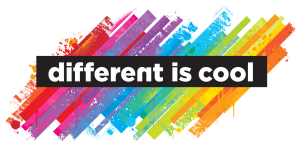Independence in personal care skills is arguably one of the most important skills to teach at any time, but even more so for older people on the spectrum. Often, when it becomes apparent that a person is going to need some level of care for their entire life, thoughts of independence slip to the wayside and we insert ourselves in the name of efficiency and accuracy. Sometimes this is necessary, but usually, it is not. In reality, we need to arm our loved ones on the spectrum in whatever way we can as they age.





People on the spectrum can benefit from ABA teaching their entire lives, not just in childhood years. I’ve taught a man in his 40’s to navigate his personal care independently. Unless there’s some physical limitation, most people can do the basics for themselves with a little patience and persistence.
Even when personal care skills are targeted in young learners at school-based programs, it’s likely you’ll have to re-teach, or “teach up” the skills at home, since people on the spectrum often have trouble generalizing skills from one environment to another. This post includes strategies you can use to teach these essential personal care skills from the ground up.
Personal care skills are mostly made up of sequences, so It’s helpful to use a method called “chaining” which involves breaking down a sequence into smaller steps and then teaching them in succession. You can start the teaching at the beginning (forward chaining) or the end (backward chaining) – but in either case you prompt all of the steps that haven’t been taught yet, and only expect the one currently being taught, and those already mastered, to be done independently.

- Start small. This person hasn’t had to do this by themselves before, so don’t make it too hard. Make sure the teaching steps are broken down into the right size; too many steps is tedious while not enough will make progress difficult.
- When they do it right on their own, tell them right away in whatever way they’ll best understand and appreciate, especially the first time! I’ve worked with people who love some praise and a high five, and others who only notice if their awesomeness elicits a mini chocolate bar.
- When prompting – Try to point at what they should be doing rather than talking – talking is really hard to eliminate from a sequence. Physically prompting (hand over hand) works well too if they’ll tolerate it.
- Make it natural. Watch how they would do it normally so that you’re not trying to teach over existing habits (e.g., When they put their toothbrush in their mouth, where do they start naturally?).
Picture Models
These are a great low-tech way to allow for a built-in prompt. They are also easy on the wallet. If you have access to a laminator, they are perfect for anywhere water is going to be used. The key here is that the pictures are clearly depicting the steps required. Sometimes you’ll need to take the pictures yourself, and sometimes Google Images will suffice. Google Images are awesome if you need a really discrete image without any distractions.
Tip! Make sure the learner can label the objects in the schedule prior to using it. If they’re not verbal, or their expressive language is poor, see if they can match the picture to the 3D object.
This is a shower schedule I created for a client. There are two rows of velcro because initially he needed prompts to retrieve the soap, but we removed them when he didn’t need them anymore. Picture schedules can also be presented in small binders/booklets, or in an app on a tablet/phone.

Sometimes the sequence becomes so routine that the schedule can be faded entirely, but in this case we decided to leave it. Prior to introducing this schedule, someone would have to stand in the bathroom, and verbally direct him to wash all of his body parts.
Video Models
Video models are my favourite (did I mention I’m a nerd?), and with everyone having digital cameras and smartphones these days, anyone can make one. Video models are great for shaving and teeth brushing because they allow for both the location and time required to be embedded in the prompts. If you add them to YouTube, they become accessible on multiple devices!
This gem is a video model I’ve used to teach teeth brushing recently. If you would have told me 5 years ago, that I’d post a video of myself brushing my teeth on the internet, I wouldn’t have believed you, but here it is. Anything in the name of teaching – I have no shame. I’ve also posted a shaving video model if you want to check it out too.
The benefit of picture and video models is that the focus is not on you. The learner is attending to the visual stimuli and learns to look there for direction as opposed to you. Because of this, independence can often be achieved quicker than trying to achieve a perfect rote response.
Tip! If possible, try to prompt from behind so that you’re not making yourself part of the sequence – it will make it easier to fade yourself out later.
I look forward to hearing about your teaching success stories. I also love problem-solving, so if you need a second set of virtual eyes, I’ll happily oblige!
Happy Teaching!






Recent Comments